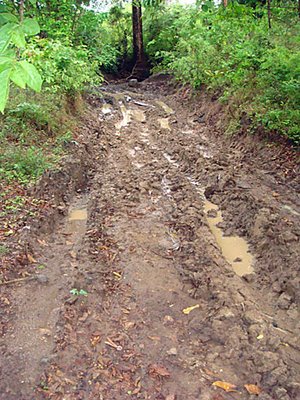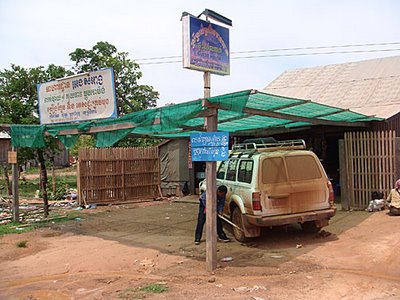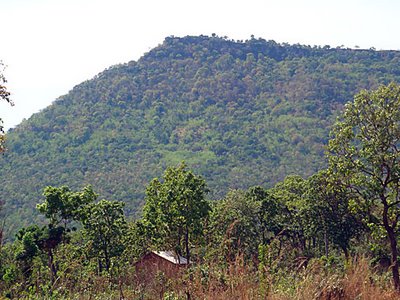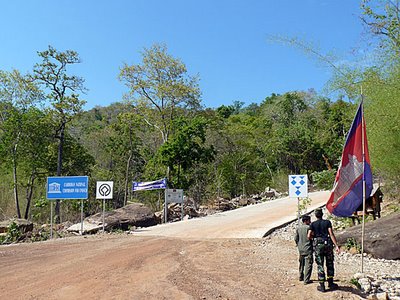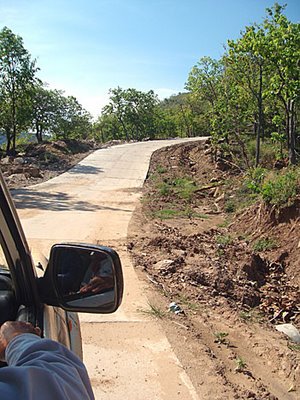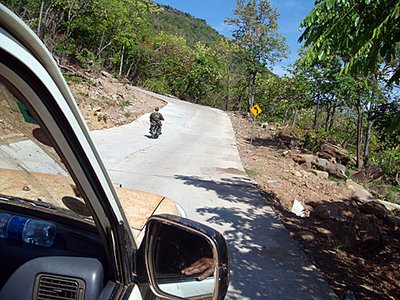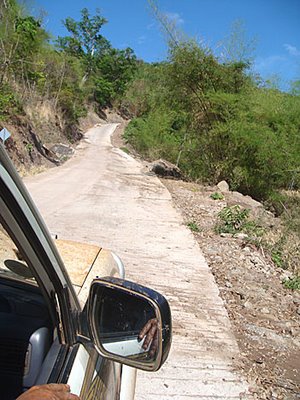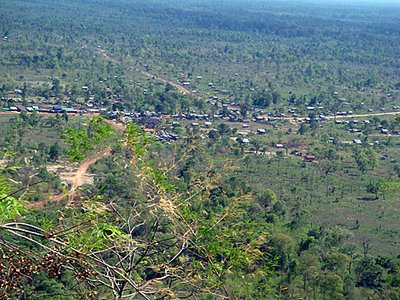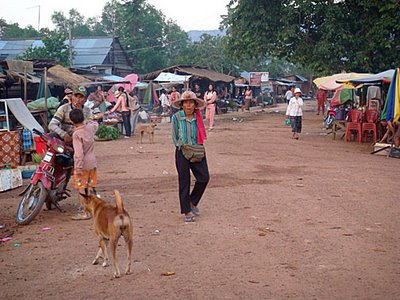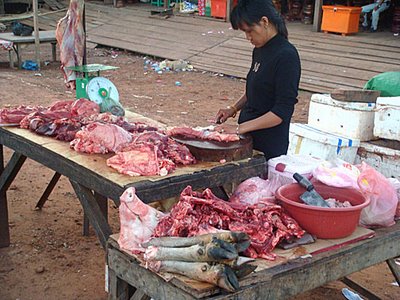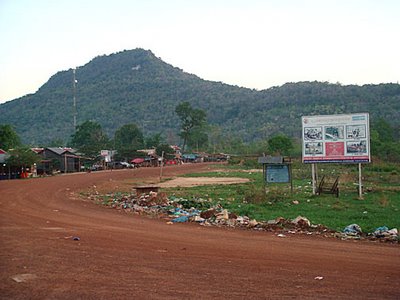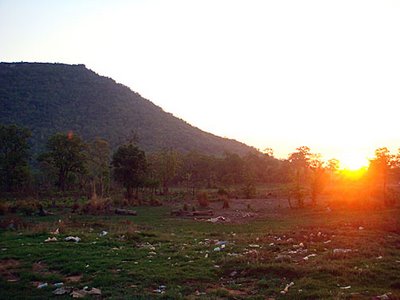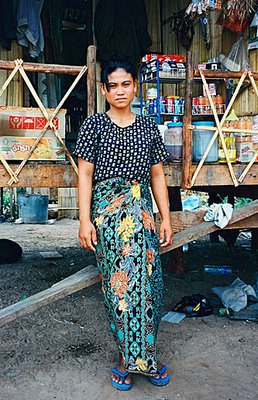En route to Preah Vihear
I've now reached Preah Vihear in the recollections from my trip to northern Cambodia that took place in late March. We'd arrived in Tbeng Meanchey after the gruelling 11-hour moto ride from Stung Treng. In the Malop Dong restaurant we met up with Vutha and Seyha, who would accompany us on the remainder of our trip to Preah Vihear, Anlong Veng and Banteay Chhmar over the next couple of days. They work with me at Hanuman Tourism and came equipped with a 4WD to make life a little easier for my old bones. Early the next morning, during a thunderous storm, we headed south towards the temple site of Preah Khan for a quick inspection, however the rain of the last few days did us no favours. Preah Khan is hard to reach at the best of times, located a long way from any main roads and reachable on local dirt tracks which get very muddy after rain, and so it proved. Two hours into our trip and with Vutha, our best driver at the helm, we deemed it impossible to continue and get to Preah Vihear in the same day. So, reluctantly, we turned around, sloshed through the water-filled track we'd just navigated and returned to Tbeng Meanchey by 10am.
The road to Preah Vihear was much easier, though diversions aplenty as they are laying lots of concrete culverts at various points especially the small bridges. At the turn off for Choam Khsan, the recent upsurge in interest in the province has cleared the heavily-forested area into a mini-housing centre with a new large market standing empty, whilst at Sraem, where we stopped for lunch, the small town was awash with military personnel. It took us 2 hours to reach Sraem. Our lunch of chicken and deer was quickly consumed and the final 45 minutes to Kor Muy, the village at the foot of Preah Vihear, was remarkable for the sheer volume of military troops and heavy guns and equipment that is visible from the main road. This area used to be a wilderness with nothing and no-one between the sleepy villages. The change is dramatic. We quickly confirmed our guesthouse booking then took the newly-laid road to the top of the mountain. It took about half an hour as the incline is very steep in places and not for the faint-hearted. At the beginning of the road we spoke to a few soldiers to check the situation which they said was quiet, and as we neared the top of the road we encountered a barrage of machine-gun posts dug in on both sides, with plenty of troops milling around, especially when we reached the summit and the area around the small pagoda. This had been the scene of one of the main disputes with the Thai soldiers in the preceding months. All the soldiers appeared at ease, though each carried their own arsenal of weapons and the gun posts facing Thailand were heavily-manned from what I could see. We had reached Preah Vihear and parked our 4WD next to the 5th Gopura.
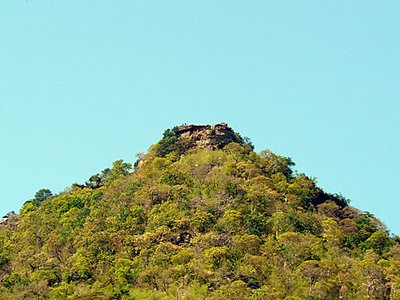 The rock formation at the top of the Preah Vihear mountain - I would be standing there a few hours later
The rock formation at the top of the Preah Vihear mountain - I would be standing there a few hours later
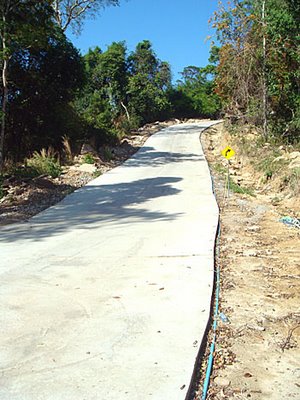 The final leg of the mountain road, just around the corner are the machine-gun posts and the summit of Preah Vihear
The final leg of the mountain road, just around the corner are the machine-gun posts and the summit of Preah Vihear
The road to Preah Vihear was much easier, though diversions aplenty as they are laying lots of concrete culverts at various points especially the small bridges. At the turn off for Choam Khsan, the recent upsurge in interest in the province has cleared the heavily-forested area into a mini-housing centre with a new large market standing empty, whilst at Sraem, where we stopped for lunch, the small town was awash with military personnel. It took us 2 hours to reach Sraem. Our lunch of chicken and deer was quickly consumed and the final 45 minutes to Kor Muy, the village at the foot of Preah Vihear, was remarkable for the sheer volume of military troops and heavy guns and equipment that is visible from the main road. This area used to be a wilderness with nothing and no-one between the sleepy villages. The change is dramatic. We quickly confirmed our guesthouse booking then took the newly-laid road to the top of the mountain. It took about half an hour as the incline is very steep in places and not for the faint-hearted. At the beginning of the road we spoke to a few soldiers to check the situation which they said was quiet, and as we neared the top of the road we encountered a barrage of machine-gun posts dug in on both sides, with plenty of troops milling around, especially when we reached the summit and the area around the small pagoda. This had been the scene of one of the main disputes with the Thai soldiers in the preceding months. All the soldiers appeared at ease, though each carried their own arsenal of weapons and the gun posts facing Thailand were heavily-manned from what I could see. We had reached Preah Vihear and parked our 4WD next to the 5th Gopura.
 The rock formation at the top of the Preah Vihear mountain - I would be standing there a few hours later
The rock formation at the top of the Preah Vihear mountain - I would be standing there a few hours later The final leg of the mountain road, just around the corner are the machine-gun posts and the summit of Preah Vihear
The final leg of the mountain road, just around the corner are the machine-gun posts and the summit of Preah VihearLabels: Kor Muy, Preah Khan, Preah Vihear, Tbeng Meanchey
